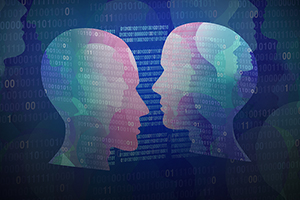Detecting Deepfakes

Generative Adversary Network (GAN) models are used to synthesize realistic human faces — known as deepfakes — and methods for detecting them generally rely on tracing signal artifacts that these models leave behind. But a new artificial intelligence (AI) algorithm has been developed that can spot fake images by analyzing reflections in the eyes.
In most portraits, corneal highlights should have approximately the same shape. The new system compares these shapes and assigns a similarity “score” using a metric known as intersection over union (IoU), a tool that is widely used for object detection in computer vision systems. The lower the IoU score, the more likely it is that the image is fake.
The method can only be used on frontal poses where the eyes are relatively parallel to the camera and the light or reflection source is visible to both. However, under these conditions it was able to identify GAN-synthesized images with an accuracy of 94 percent.
For information: University at Buffalo, Computer Science and Engineering, 338 Davis Hall, Buffalo, NY 14260; phone: 716-645-3180; Website: http://engineering.buffalo.edu/computer-science-engineering.html or https://arxiv.org/pdf/2009.11924.pdf